

A Patient’s Guide to Total
Surgery (Hip and Knee)
WHERE THE WORLD COMES TO GET BACK IN THE GAME
Joint Replacement
YOUR PATHWAY TO RECOVERY
YOUR PATHWAY TO RECOVERY
A Patient’s Guide to Total Joint Replacement Surgery (Hip and Knee)
DEVELOPED BY:
Members of the Interdisciplinary Patient Education Committee and the Adult Reconstruction and Joint Replacement Service
SPECIAL THANKS TO
Michael L. Parks, MD, for his leadership and oversight of this material; Chitranjan Ranawat, MD, and Amar Ranawat, MD, for photographs, illustrations and editorial review; and Mark P Figgie, MD, Steven Haas, MD, and Geoffrey Westrich, MD, for editorial review.
ABOUT HOSPITAL FOR SPECIAL SURGERY
Founded in 1863, Hospital for Special Surgery (HSS) is the world’s leading academic medical center focused on musculoskeletal health. HSS is nationally ranked No. 1 in orthopedics and No. 3 in rheumatology by U.S. News & World Report (2016-2022), and is the first hospital in New York State to receive Magnet Recognition for Excellence in Nursing Service from the American Nurses Credentialing Center four consecutive times. HSS has one of the lowest infection rates in the country. HSS is an affiliate of Weill Cornell Medical College and, as such, all Hospital for Special Surgery medical staff are faculty of Weill Cornell. The Hospital's research division is internationally recognized as a leader in the investigation of musculoskeletal and autoimmune diseases. HSS has locations in New York, New Jersey, Connecticut and Florida.
HSS | Hospital for Special Surgery
535 East 70th Street, New York, NY 10021 tel 212.606.1000
hss.edu
©2022 Hospital for Special Surgery
2 A Patient’s Guide to Total Joint Replacement Surgery (Hip and Knee) Volume 1 • 9th Edition • Patient Education Series
A Patient’s Guide to Total Joint Replacement Surgery (Hip and Knee)
Dear Patient,

Welcome to Hospital for Special Surgery (HSS). We are very pleased that you have chosen HSS for your joint replacement surgery, and we are committed to making your recovery a comfortable and successful one. It is with great pleasure that we on the Adult Reconstruction and Joint Replacement (ARJR) Service provide you with a comprehensive overview of your upcoming experience. This manual is your guide.
We urge you to read and refer to it frequently, and to bring it with you during your Hospital appointments and visits. Additional information and patient education materials are available for your review on our website hss.edu
Members of the ARJR service are dedicated to improving the design of joint replacements and the development of newer and less invasive techniques to facilitate a rapid and successful recovery. We appreciate your participation in our research studies and welcome your comments and input to help improve our Total Joint Program. On behalf of all members of our service, we hope that this educational booklet helps answer many of the questions regarding your condition and treatment.
Please feel free to contact the Patient Education staff at 212.606.1263 if you have questions or require additional information.
Sincerely,
Brian Kelly, MD Surgeon-in-Chief and Medical Director
Matthias Bostrom, MD Chief, Adult Reconstruction and Joint Replacement Service
A Patient’s Guide to Total Joint Replacement Surgery (Hip and Knee) 3
Members of the Interdisciplinary Patient Education Committee
4 A Patient’s Guide to Total Joint Replacement Surgery (Hip and Knee) Before You Come to the Hospital Important Phone Numbers 5 Before You Come to the Hospital 6 Diet 10 When You Come to the Hospital 11 Your Surgery and Hospital Stay Visitor Code of Conduct 13 The Day of Surgery 14 Recovering in the Hospital 20 Managing Pain 22 Rehabilitation in the Hospital 26 Preventing Blood Clots 30 Preparing to Return Home 31 Final Steps: At Home Guidelines for Recovering at Home 32 Preventing Infection 33 Your New Joint Is Different 35 Recovery at Home 36 Physical Therapy Exercise Program 37 A Closer Look at Total Hip Replacement 39 Total Hip Information and Physical Therapy 42 A Closer Look at Total Knee Replacement 44 Total Knee Information and Physical Therapy 46 Additional Discharge Instructions 50 Conclusion 51 Providing Feedback to HSS 52
Table of Contents

A Patient’s Guide to Total Joint Replacement Surgery (Hip and Knee) 5 Important Telephone Numbers Hospital for Special Surgery Main 212.606.1000 Admitting | Patient Access 212.606.1241 Patient Education 212.606.1263 Spiritual Care Access Private 212.606.1757 Nursing Service 212.774.7187 Food and Nutrition Services 212.606.1293
Before You Come to the Hospital
Total joint replacement (TJR) can enhance your quality of life by providing many years of improved mobility and reduced pain. More than 7 million Americans have had total hip or knee replacement surgery. In the last decade, remarkable advances in technology have transformed TJR into an efficient and widely performed procedure.
Before, during and after your Hospital stay, the members of the Adult Reconstruction and Joint Replacement (ARJR) Service and HSS staff are committed to your well-being and satisfaction. Each attending surgeon is supported by a large staff of fellows, residents, physician assistants, anesthesiologists, nurses, physical therapists, social workers and administrative personnel.
In bringing you the latest advances in TJR, Hospital for Special Surgery, a major teaching affiliate of Weill Cornell Medical College, combines world-class professionalism with personalized care. The Hospital’s outstanding diagnostic, surgical and rehabilitation divisions offer a complete array of services.
The staff at HSS is here to serve you. Help us help you; any medical concerns should be discussed with your surgeon and unresolved administrative issues with your surgeon’s office manager. Your active participation in treatment, with full understanding of all issues, is vital to your uneventful recovery.
6 A Patient’s Guide to Total Joint Replacement Surgery (Hip and Knee)
Before You Come to the Hospital
Things to Do
1. Before your surgery, you will be scheduled for an appointment with an internist at HSS who will:
■ Review and/or perform any necessary diagnostic tests.
■ Perform a medical exam to make sure you are safe for surgery.
2. Unless instructed otherwise, continue to take medication already prescribed by your own physician.
■ Consult your physician regarding aspirin products. Patients with cardiac stents should continue to take their aspirin or other NSAIDs.
3. You will also be scheduled for a preoperative physical therapy education session and presurgical testing approximately 1-3 weeks prior to surgery, where:
■ On the day of presurgical testing at HSS (main campus), you will check in to Patient Access Services.
■ The presurgical screening staff will perform routine diagnostic testing to be sure you are ready for surgery, including taking a blood sample for testing, a urine specimen and an electrocardiogram (EKG).
■ You should bring a list of current medications and a detailed account of prior medical, surgical and family health history.
■ The nursing staff will request and review information as part of a comprehensive medical history to add to your patient database profile.
■ The nursing staff will provide instruction on preparation for surgery.
4. HSS staff will make an appointment for you to attend the preoperative patient education class/webinar and will send you links to patient education videos. The class is approximately 60-75 minutes long. During the class, patient educators will:
■ Review what to expect before, during and after surgery.
■ Discuss setting realistic expectations, patient safety, mobility, pain management and the prevention of complications (infection and blood clots).
■ Provide information about:
■ Skin preparation, nutrition and diet restrictions before surgery.
■ The preoperative patient phone call (1-2 business days prior to surgery) that will include general presurgical information.
5. The Preadmission Discharge Planning team, comprised of members from HSS Rehabilitation and Case Management, offers patients and their families the opportunity to receive information and assistance pertaining to post-operative care. If you have any questions about you discharge needs, you may call Preadmission Discharge Planning at: (212.606.1920)
6. Prepare for your return home from the Hospital after surgery. This includes clearing space around your home for walking and using night lights for improved visibility.
A Patient’s Guide to Total Joint Replacement Surgery (Hip and Knee) 7
7. Your surgeon's office staff may recommend HSS@HOME or outpatient physical therapy for your post-operative rehabilitation. Your post-operative physical therapy typically begins within one week following your surgery, but please be sure to follow your surgeon’s recommendation. If you would like to set up a post-operative appointment for outpatient physical therapy at HSS, please call 212-606-1317 to schedule and find the best location for you.
All patients must call the Hospital’s presurgical information line at 212.606.1630 and listen to a pre-recorded message within 48 hours of your scheduled surgery for general instructions and a review of the preHospital process.
8. Please complete the Health Care Proxy form and bring it with you on the day of admission. (Or bring one you may already have previously completed.) This is a form authorizing another person, designated by you, to make decisions with your physician about your care, should this become necessary.
9. A nurse from the Call Center will contact you 1 business day prior to your surgical date
10. (Friday for Monday surgical cases) with more detailed instructions, usually between 1:30 pm and 7:00 pm. This preoperative phone call will provide instructions to prepare you for surgery, including:
- Specific medication and diet instructions.
- The time and place to arrive.
11. Wash the surgical area (front, side and back) with antiseptic soap solution at the end of your last bath or shower before surgery. The solution should be rinsed and removed after application. Do not shave your legs the day before or the day of surgery. Specific instructions will be provided at the presurgical screening appointment, the preoperative education class and during the preoperative phone call.
12. Please DO NOT bring the sleep apnea machine, but please bring in the settings for your device. HSS has necessary equipment (i.e. mask, tubing). Patients with sleep apnea are generally required to stay overnight in the Post-Anesthesia Care Unit (PACU) to be monitored and observed.
13. The use of nicotine products (i.e., cigarettes, cigars, gum or patches) has been shown to increase risk of complications following surgery. They can inhibit bone and wound healing by decreasing blood flow to the surgical site. They can also increase the risk of deep vein thrombosis (DVT) a.k.a. blood clots. Please discuss smoking cessation with your HSS Internist. Please do not smoke or vape the day of surgery.
14. On the day of your surgery, you and your designated contact will be instructed to check in to the Patient Access Services area (off the HSS lobby).
8 A Patient’s Guide to Total Joint Replacement Surgery (Hip and Knee)
Extremely Important
Always have a list of your current medications and the dosage to ensure that the correct medication and dosage can be prescribed for you while you are in the Hospital. You should also have contact information for your local physician, and any details on medical information, allergies or past reactions to anesthesia.
Be sure you understand all preoperative instructions. If you have questions or concerns, please discuss them with your surgeon or call the HSS Patient Education team at 212.606.1263.

A Patient’s Guide to Total Joint Replacement Surgery (Hip and Knee) 9
YOUR DIET AND PREPARING FOR SURGERY
Pre-Surgical Diet Guidelines

The pre-surgical diet guidelines below are for general purposes only. Your physician or surgeon may require you to follow an alternative plan. In that case, follow your physician’s instructions rather than the guidelines below.
FOURTEEN DAYS PRIOR TO SURGERY
■ Stop all nutritional and herbal supplements (vitamins/minerals/herbals)
■ EXCEPTIONS – the following are OK to continue: Calcium, Iron & Vitamin D
THE DAY BEFORE SURGERY
■ Follow your Regular diet
THE NIGHT BEFORE SURGERY
■ Drink at least 20-24 oz (3cups) of allowed clear fluids
■ Do not eat any solid food after midnight (CLEAR FLUIDS ONLY after midnight)
THE DAY OF SURGERY
■ Take CLEAR FLUIDS ONLY
■ Drink at least 12 oz (1 ½ cups) of allowed clear fluids PRIOR TO YOUR ARRIVAL AT THE HOSPITAL
■ If instructed, drink carbohydrate-rich drink (Ensure Pre-Surgery®, 10 oz), 3 hours before surgery, COMPLETING PRIOR TO YOUR ARRIVAL AT THE HOSPITAL
■ DO NOT EAT OR DRINK ANYTHING 3 HOURS PRIOR TO YOUR PROCEDURE AND AFTER ARRIVING AT THE HOSPITAL.
CLEAR FLUID DIET (ANY MEAL)
ALLOWED
■ Water
■ Apple, Cranberry & Grape Juice
■ Gatorade
■ Black Coffee or Tea
■ Clear Broth
■ Ginger ale and Seltzer
■ Jello and Italian Ice
■ Chewing gum – DO NOT SWALLOW
■ Ensure® Pre-Surgery - (IF instructed)
NOT ALLOWED
■Milk or Dairy Products (including in coffee and tea)
■Citrus Juices
■Prune Juice
■Juices with Pulp
■Any food or beverage not listed in the “allowed” column
Hospital for Special Surgery is an affiliate of Weill Cornell Medical College. 535 East 70th Street | New York, NY 10021 | tel 212.606.1000 | hss.edu July_12_2023
When You Come to the Hospital
Please pack lightly as HSS staff cannot store multiple bags. Please pack your belongings in a small bag. Belongings must fit into a storage bag issued by HSS. Your belongings will be secured and stored for you.
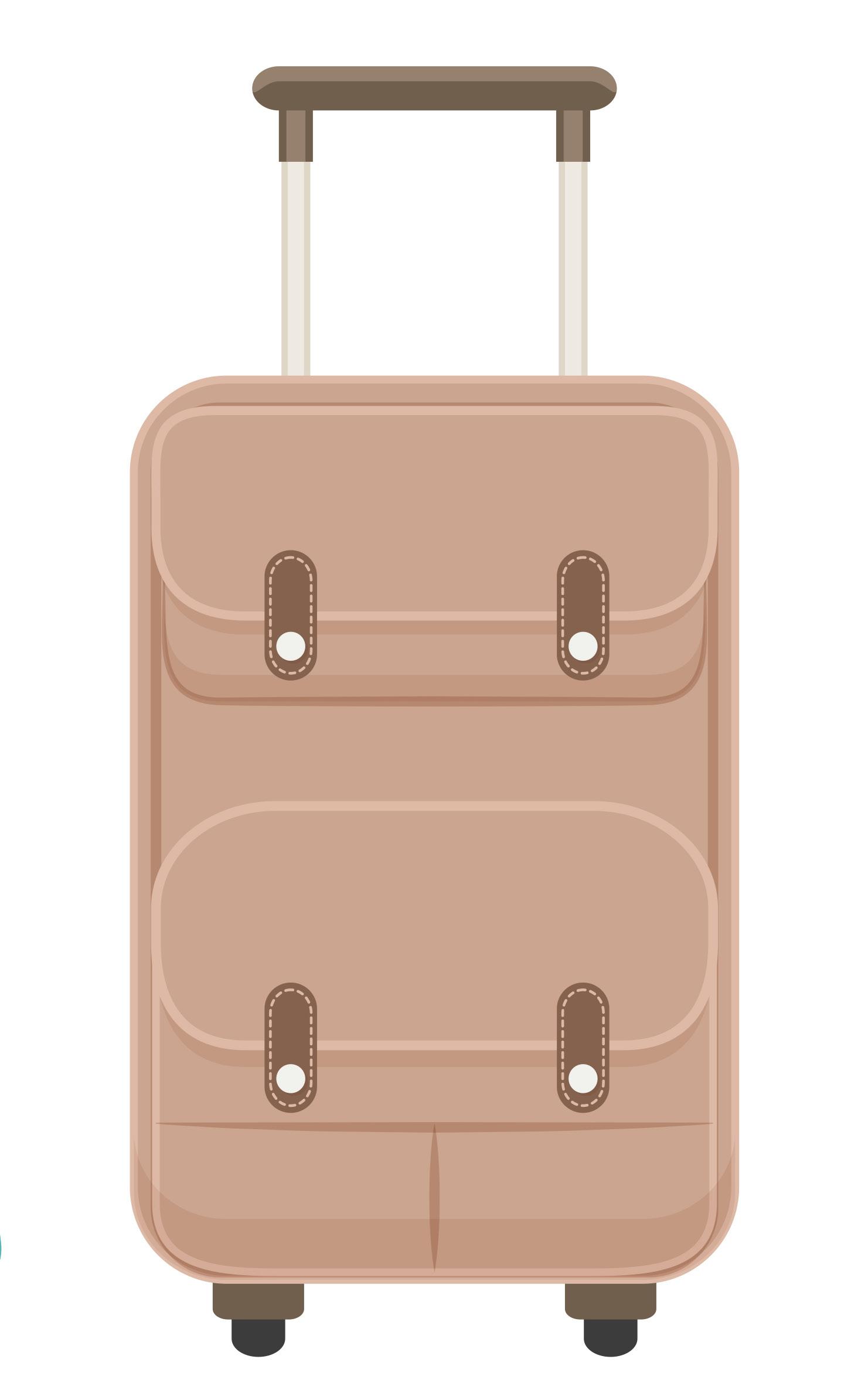

Please do not bring in any rolling suitcases or luggage.
(Hip
A Patient’s Guide to Total Joint Replacement Surgery
and Knee) 11
When You Come to the Hospital A Checklist for Your Stay
A legal picture identification (driver’s license, passport, birth certificate, social security card, green card/permanent resident card, military ID). A copy is acceptable.
Your hospitalization insurance cards
X-rays or laboratory reports (if instructed by the staff)
Any assistive device you use (e.g., cane, walker)
Your completed Health Care Proxy form
Paperwork, including consent forms, sent to you by your surgeon. Also bring a list of your current medications with dosages and medical information from your physician.
This manual: Your Pathway to Recovery: A Patient's Guide to Total Joint Replacement Surgery (Hip and Knee)
Nonslip, flat, closed toe, joint-supportive athletic or walking shoes
A small amount of money for newspapers or other incidentals
A book, magazine or hobby item to occupy time
Please Do Not Bring
Medications, including narcotic substances (unless instructed by your HSS pharmacist). Self-medication during your Hospital stay is prohibited. It may lead to unsafe conditions like overdoses and/or drug interactions.
Valuables (except those mentioned above)
Jewelry: Remove and leave at home all piercings and jewelry, including wedding rings to ensure your safety during your Hospital stay. Otherwise, see a jeweler for assistance for removal if needed.
CPAP / BiPAP - Machine, mask or tubing (please bring the settings for your device only).
12 A Patient’s Guide to Total Joint Replacement Surgery (Hip and Knee)
VISITOR CODE OF CONDUCT
When visiting our patient care units, we ask that you follow the visitor code of conduct for the safety and well-being of our patients.
1. Please be advised that all visitors under the age of 14 are not permitted.
2. Sleeping in patient rooms is not allowed.
3. If the patient you are visiting is sharing a room, please be mindful of the other patient’s privacy and need for quiet.
4. Plan on spending just a short time visiting. Although the visit is almost always welcome, it can be very tiring for the patient.
5. Carry on a cheerful conversation in a soft tone.
6. Please silence your mobile phone while visiting.
7. Do not visit if you are unwell, particularly if you have cold or flu-like symptoms or if you have had a stomach upset in the last 48 hours.
8. For the patient’s safety, please do not assist patients out of bed. Please contact a clinical staff member for assistance.
For any questions related to the Visitors’ Code of Conduct please contact us at 212.774.7547.
A Patient’s Guide to Total Joint Replacement Surgery (Hip and Knee) 13
Your Surgery and Hospital Stay The


Day of Surgery
Traveling to HSS
The Hospital is located at 535 East 70th Street on the Upper East Side of Manhattan, between the East River and York Avenue. For physicians, patients and families visiting from out of town, the Hospital is readily accessible by automobile and taxi via all of the major bridges and tunnel routes. Garage parking is available nearby; street parking is subject to local restrictions.
For public transportation options visit hss.edu/publictransportation.
Map: Finding Your Way Around HSS
14 A Patient’s Guide to Total Joint Replacement Surgery (Hip and Knee)
i P P $ M31 M15 M72 Entrance i P P $ M31 M15 M72 Accessible Entrance i P P $ M31 M15 M72 Bus Food at HSS Sotheby’s NewYork-Presbyterian Hospital E 71st St E 71st St E 73rd St E 73rd St E 74th St E 74th St E 75th St E 75th St FDR Drive East River E 70th St E 72nd St E 72nd St E 70th St Second Avenue First Avenue First Avenue FDR Exit 13 Entrance To FDR South York Avenue uptown bus M15 downtown bus M15 Entrance To FDR North @ 62 nd St 475 M72 York Avenue downtownuptown/ bus M31 510 1 East River Place 2nd FL Belaire Entrance Ground Belaire entrance 519 431 535 523 524 525 541 Dana Center BioDynamic Technologies River Terrace East River Professional Building Belaire East River Place Hospital for Special Surgery Main Hospital Parker House Helmsley Medical Tower Sotheby’s Bridge The Pavilion 530 517 NewYork-Presbyterian Hospital Special Procedures Unit Ambulatory Care Center 429 405 Spine Therapy Center HSS Research Institute 515 i P P $ M31 M15 M72 i P P $ M31 M15 M72 i P P $ M31 M15 M72 i P P $ M31 M15 M72 i P P $ M31 M15 M72 i P P $ M31 M15 M72 i P P $ M31 M15 M72 i P P $ M31 M15 M72 i P P $ M31 M15 M72 i P P $ M31 M15 M72 i P P $ M31 M15 M72 Parking i P P $ M31 M15 M72 Main Hospital 535 East 70th St. Integrative Care Center (not pictured) 635 Madison Ave. (59th St.) Belaire 525 East 71st St. Ambulatory Care Center 475 East 72nd St. East River Professional Bldg 523 East 72nd St. River Terrace 519 East 72nd St. BioDynamic Technologies 431 East 73rd St. Special Procedures Unit 429 East 75th St. Spine Therapy Center 405 East 75th St. Dana Center 510 East 73rd St. The Pavilion 541 East 71st St. NewYork-Presbyterian Hospital 525 East 68th St.
HSS ASC of Manhattan (not pictured) 1233 Second Ave. (65th St.) HSS Research Insitute 515 East 71nd St.
The Day of Surgery
You and the person accompanying you should come to Patient Access Services in the first floor lobby. When you arrive, the Patient Access Services/Admitting staff will process your admission, issue your identification bracelet and direct you to the 4th Floor Family Atrium.
The 4th Floor Family Atrium is a lounge area and central hub where our patients and one designated person will sit prior to be escorted to the holding area. Your designated person may stay in the atrium while you are in surgery. The area is equipped with Wi-Fi, and cell phone use is allowed.
Members of the Same Day Surgery (SDS) nursing staff will greet and escort you and the person accompanying you to the presurgical holding area. This is where you will meet a physician assistant (PA) who will reassess your condition and medical/surgical history.
PAs are healthcare professionals licensed to practice medicine with physician supervision. As part of their comprehensive responsibilities, PAs conduct physical exams, diagnose and treat illnesses, order and review tests, counsel on preventive healthcare, assist in surgery, and prescribe medications. PAs work closely with other members of the operating room (OR) and anesthesia teams. They will finalize your presurgical preparations.

A Patient’s Guide to Total Joint Replacement Surgery (Hip and Knee) 15
The SDS nursing staff will complete your admission process, check your identification band and assist you with changing into our hospital gown. Your belongings, which should fit in one small bag, that you can carry will be labeled, and will remain with the security department until you are sent to an inpatient room. You should ask the person accompanying you to hold onto your eyeglasses and hearing aids for you, and to return them to you following surgery.
The SDS nursing staff will wash and prepare the surgical site area. They will also start an intravenous (IV) line. The IV provides a route for fluids, medications and blood products, if necessary. It is also the main route for your antibiotics to prevent and reduce the risk of infection. The IV bag and tubing will likely be disconnected after 24 hours when your medication is complete and you have tolerated fluids and food. We will keep the IV access secured until you are discharged.
A PA and other members of your surgical team will take your latest information and perform some additional safety cross-checks and tasks. They will review the surgical consent with you and have you sign the actual consent paperwork. Your surgeon will confirm your identity, review and then sign your surgical site with a surgical marker. These steps are an important part of the process designed to ensure patient safety.
Members of your anesthesia team will review and explain the plan for anesthesia, including the type of anesthesia (epidural or spinal), your level of sedation and your postsurgical pain management.

16 A Patient’s Guide to Total Joint Replacement Surgery (Hip and Knee)
The anesthesiologist will also ask you to sign the consent to perform anesthesia. A majority of our TJR patients will receive IV sedation and a combined spinal or epidural anesthetic, in which a narrow catheter (tube) is inserted in the lower spine and allows a continuous flow of anesthetic medication to block all feeling during the surgery. The level of sedation and anesthesia is tailored to your specific needs and will allow you to awaken very soon after the surgical procedure is completed.
Members of the OR staff will recheck that all of the appropriate paperwork and tasks have been performed. They will then escort you on a stretcher into one of the operating room suites. The person accompanying you will be instructed to return to the Family Atrium.
TJR surgery generally takes approximately 1 to 1 ½ hours, but the actual elapsed time from operating room to post-anesthesia care unit is usually about 2 ½ hours. Your surgeon will provide more specific details and will make arrangements to meet with your family in the Family Atrium following surgery, or will make other arrangements to contact them. Please provide the surgeon with specific contact information as to where and how your family can be reached.
The Family Resource Line (212.774.7547) can be utilized if you would like further information on what to expect the day of surgery and for updates to visiting hour policy. Please encourage your visitors to call if they have any questions.
A Patient’s Guide to Total Joint Replacement Surgery (Hip and Knee) 17
After Surgery
In the Post-Anesthesia Care Unit (PACU), also called the Recovery Room, you will be given oxygen, and your vital signs (breaths, heart rate and blood pressure) will be monitored. The team will also focus on managing your pain so you will be comfortable when you begin rehabilitation. Once in the PACU, the person that accompanied you will be provided an update. To maintain patient privacy, as well as to reduce the risk of infection, no visits are allowed.
When the anesthesiologist determines that you are sufficiently recovered, your vital signs are stable and pain is well managed after surgery, you will be transported to an inpatient unit. While most patients are transferred to inpatient units, some remain overnight in the PACU for additional monitoring and observation.


18 A Patient’s Guide to Total Joint Replacement Surgery (Hip and Knee)
THR TKR
Spiritual Support
HSS formally recognizes the role that spiritual support can play in coping with and recovering from physical illness. To help meet your spiritual and emotional needs, HSS provides a chaplaincy service as an integral part of the healthcare team. The chaplains are here to serve you and your family. They provide pastoral support in any faith. Please call 212.606.1757 to contact the HSS Spiritual Care Office.
Private Nursing Service
If you wish to have a private nurse during your Hospital stay, please call 212.774.7187 to arrange for this service.

A Patient’s Guide to Total Joint Replacement Surgery (Hip and Knee) 19
Recovering in the Hospital
A dressing will be applied to your hip or knee. You may also have a thin tube inserted at the surgical site attached to a drain to prevent accumulation of blood around the muscles and bones of the joint.
The tube and drain will likely be removed the day after surgery, and the bandage is removed the first or second postsurgical day.
Members of the nursing staff will position you in bed and help you turn until you are able to move on your own. You may have a pillow between your legs if ordered by your surgeon. Because anesthesia may temporarily inhibit urination after surgery, a Foley catheter may be inserted into the bladder to remove urine. This catheter is usually removed within 24 hours.
In collaboration with you and your support system, the Hospital staff, including a physician, physician assistant, nurse, nurse practitioner, physical therapist and social worker will plan, provide and monitor your care.
Exercise
Gentle exercises to improve your range of motion can help prevent circulation problems as well as strengthen your muscles. Very soon after surgery, a physical therapist will teach and review your exercise program.
Deep Breathing
It is extremely important to perform deep breathing exercises after surgery to rid your airway and lung passages of mucus. Normally, you take deep breaths almost every hour, usually without being aware, whenever you sigh or yawn. When you are in pain or are drowsy from anesthesia or pain medication, your breathing may be shallow. To ensure that you take deep breaths, the nursing staff will provide you with a device called an incentive spirometer, along with instructions on its use.
20 A Patient’s Guide to Total Joint Replacement Surgery (Hip and Knee)
HOW TO USE THE INCENTIVE SPIROMETER
1. Hold the incentive spirometer in an upright position. To start, breathe out (exhale) normally. Then close your lips tightly around the mouthpiece.
2. Take a slow, deep breath in (inhale). Breathe in as deeply as you can. When you breath in, try to keep the yellow cup in the BEST to BETTER flow range. The white piston in the main chamber moves up slowly when you breathe in to measure how deep your breaths are. Try to move the white piston as high up as you can.
3. Relax, remove the mouthpiece and then breathe out normally. The white piston will slowly fall to the bottom of the chamber.
4. Rest for a few seconds. Repeat this exercise at least 10 times every hour while you are awake. Inhaling raises the white piston
A Patient’s Guide to Total Joint Replacement Surgery (Hip and Knee) 21
Managing Pain
How Does It Feel?
Recovering from any surgery involves pain and discomfort. The Hospital’s team approach to pain management can help reduce your discomfort and thus speed your recovery. Pain management, however, begins with you. Since no objective tests exist to measure what you are feeling, you must help the staff by describing the pain, pinpointing its location and judging its intensity, as well as reporting any changes. Pain may be constant or sporadic, as well as sharp, burning, tingling or aching. A pain scale is used to help you and the staff gauge the level of pain and effectiveness of treatment.
People used to think that severe pain after surgery was something they “just had to put up with.” While it is reasonable to expect some discomfort following surgery, the current treatment options greatly reduce the level of pain most patients have.
Your description will help us provide you with a plan of care. Even under your personal pain management program, your pain level may change at times. Be sure to tell your nurse if it becomes worse.
You will be asked to rate how much pain you have on the pain scale below and what your tolerable level of pain is:
22 A Patient’s Guide to Total Joint Replacement Surgery (Hip and Knee)
PAIN SCALE No Pain Worst Pain Ever 0 1 2 3 4 5 6 7 8 9 10
Your Treatment Plan
Pain control following surgery is an important part of your care. The pain management team will use a multi-faceted approach to manage your pain. This may include a combination of nerve blocks, oral medications, injections, IV medications and catheters connected to computerized pumps with a button that is controlled by the patient (Patient-Controlled Analgesia or PCA). We try to refrain from giving injections, but sometimes this is unavoidable. Our goal is to recognize and treat pain quickly to allow full participation in the exercise program.
The goal is to transition you to oral pain medications. Usually the oral pain medication is an opioid or narcotic, but whenever possible, an anti-inflammatory medication will be ordered as well. This transition is usually a smooth one, enabling you to progress with your activities with minimal discomfort. A short course of prescription pain medication may be recommended at discharge. You will be instructed to use as needed and directed and how to gradually taper. More information will be provided prior to discharge from the Hospital.
Please let us know if your pain is not getting relieved. We want you to be as comfortable as possible while you heal. Being able to participate in your own recovery activities is a goal of the recovery process. There are alternative methods to control pain such as: guided imagery, relaxatoin techniques, and deep breathing excerises.
It is extremely important that you inform your anesthesiologist about any problems encountered with medications of any type in the past, and if you are currently using prescription medications for pain.
A Patient’s Guide to Total Joint Replacement Surgery (Hip and Knee) 23
What Is Patient-Controlled Analgesia (PCA)?
PCA is a type of pain medication delivery system which utilizes a microprocessor (computerized pump) to give a prescribed amount of medication at desired intervals. A special pain management team consisting of anesthesiologists, nurses and pharmacists supervises your use of the medication.
The pump is programmed to deliver a pain medication either when you push the button (demand dose) or by a continuous flow (basal rate). It can be attached through either your intravenous line or epidural tubing in your back during your surgery. It is called “Patient Controlled” because, if needed, you can press a button attached to the pump to give yourself a dose of pain medication.
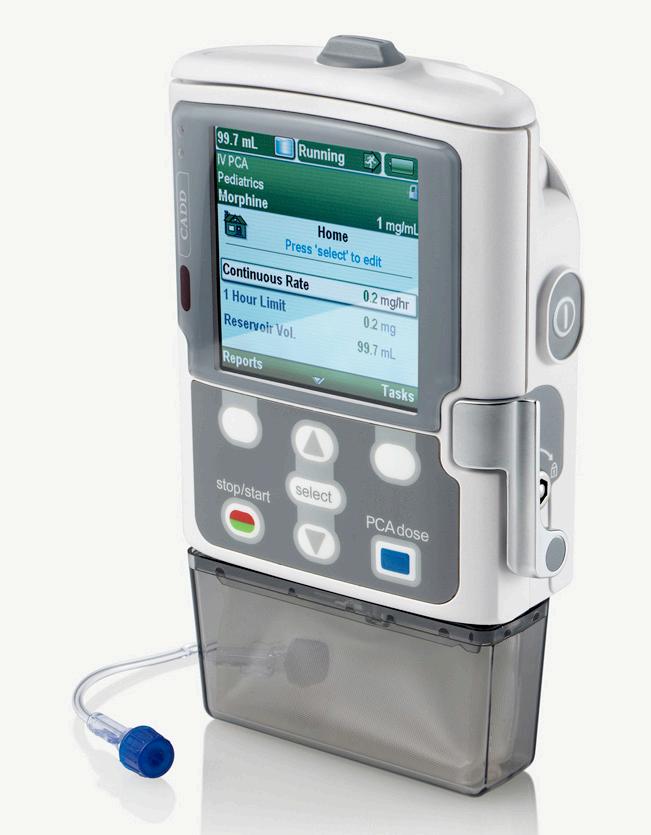
Precautions against an overdose have been incorporated into PCA. The pump is programmed not to deliver the dose of pain medication requested if it is not time to safely do so. There is an hourly limit of medication available. The PCA system automatically records both the doses delivered and denied. Your nurse checks this machine frequently and records the amount of medication used. If you are having pain after using your PCA hourly limit, tell your nurse. The nurse can call the anesthesiologist or other members of the pain management team who will check on you and adjust the medication or PCA settings as needed.
The nurses regularly check on you to evaluate your level of pain relief and assess for side effects. An anesthesiologist visits daily when you are on the PCA pump, even if your pain management is going well. If any problems arise, an anesthesiologist is on call 24 hours a day, 7 days a week.
Epidural PCA
Patients who have surgery on the hips or knees may have epidural anesthesia. After a local anesthetic injection, a catheter (very thin tubing) is placed in your back for administering the anesthesia for your operation. Afterwards, by starting a flow of pain medicine through this catheter, pain relief can be continued into the postoperative period. The PCA is attached to the epidural catheter in your back. As described above, you will be able to give yourself an extra dose of medication, if needed, to make the pain tolerable.
IV PCA
If the anesthesia used for your surgery was not epidural anesthesia, or if your surgeon and anesthesiologist feel an IV is the preferred method of applying pain control, the PCA pump will be attached to IV tubing. This means that the PCA pump will be programmed to inject pain medication directly into your blood stream. Again, you can give yourself an extra dose of medication, if needed, just by pressing the button attached to the PCA pump.
24 A Patient’s Guide to Total Joint Replacement Surgery (Hip and Knee)
PCA Pump
Nerve Block During Surgery
Some surgeons use a local anesthetic injected around the nerves of the operative site to reduce post operative pain.
Local Injections During Surgery
Some surgeons prefer to treat pain during the surgical procedure by injecting a combination of medications directly into the tissues close to the surgical site (local).
Oral Medication
After surgery, as pain decreases, you will be given oral pain medication to control any discomfort and pain.
Cold Therapy
The application of cold has been shown to reduce swelling and pain associated with inflammation at the surgical site. Ice packs or cold pads should be applied for 20 minute intervals every 3 to 4 hours on a daily basis for the first few weeks following surgery.
A Patient’s Guide to Total Joint Replacement Surgery
and Knee) 25
(Hip
Rehabilitation in the Hospital
Your rehabilitation program will begin once you are medically stable and there are orders from your doctor to begin postoperative mobility. Everyone will begin rehabilitation within 24 hours of surgery.
It is critical to understand that motivation and participation in your physical therapy program is a vital element in the success of your surgery and your overall recovery. It is imperative that you play an active role in your recovery and rehabilitation from the start!
The physical therapist will assist you in the following activities:
■ Sitting at bedside with your feet on the floor
■ Transferring in and out of bed safely
■ Walking with the aid of a device (walker, cane, or crutches)
■ Climbing stairs
Beginning to Walk
Do not get in or out of bed by yourself! Your therapist will assist you in sitting up with your feet over the bedside with feet resting on the floor. You will then stand with the use of a walker and the continued help of your therapist.
We encourage you to get out of bed with nursing staff throughout the day.
As the days progress, you will increase the distance and frequency of walking. Most patients progress to a straight cane, walker or crutches within a couple of days after surgery.
Call Don't Fall
Always make sure to ring your call bell for staff assistance getting in and out of bed.
■ A staff member must remain within your reach while maintaining your privacy and dignity during toileting.
26 A Patient’s Guide to Total Joint Replacement Surgery (Hip and Knee)
Looking Ahead
Before leaving the Hospital, you will be instructed in a home exercise program.

Remember, YOU Make the Difference!
Your participation in a physical therapy program is essential to the success of your surgery. The more committed and enthusiastic you are, the quicker your improvement will be.
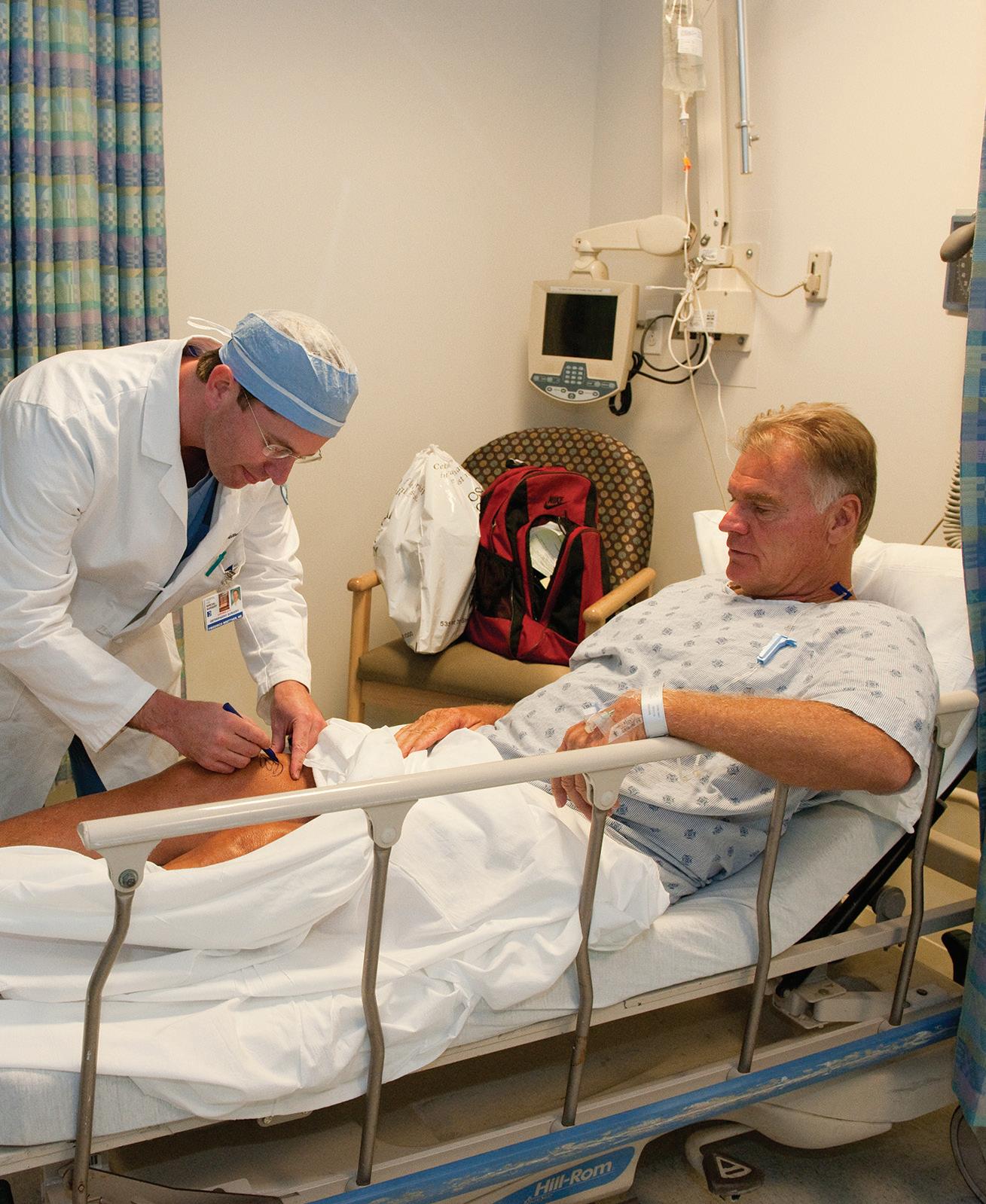
A Patient’s Guide to Total Joint Replacement Surgery (Hip and Knee) 27
Tips for a Successful Recovery at HSS
Physical Therapy
■ Participate in physical therapy daily.
■ A physical therapy schedule is available by 8:30 am 7 days a week. Ask your nurse when you are scheduled for therapy so you can be prepared and ready to participate.
■ Please note that your scheduled PT time is approximate.
Patient Safety and Falls Prevention
■ Do not get out of bed by yourself! Always ask for assistance.
■ HSS has developed a Safety and Falls Prevention pamphlet that you should read. If you don’t already have one, ask your therapist for a copy.
Bathroom Privileges
■ Once you are able to tolerate being out of bed for at least 20 minutes, you will be safe to use the bathroom with assistance.
■ If possible, use the bathroom prior to physical therapy so you can use your treatment session to improve functional mobility.
■ Bedside commodes or bedpans are alternatives to getting out of bed to use the bathroom.
Inpatient Unit Visiting Hours
■ Visiting hours may vary. You may call the Family Resource line for this information at: 212.774.7547.
■ Visitors under the age of 14 years old are not permitted in inpatient units, or pre-op areas.
■ Sleeping in patient rooms is strictly prohibited.
■ For patient safety, please do not assist patients out of bed. Contact a clinical staff member for assistance.
*Visitation subject to restrictions based on patient care needs and the need to limit access to hospital during COVID-19 restrictions.
28 A Patient’s Guide to Total Joint Replacement Surgery (Hip and Knee)
Car Transfers and Traveling by Car
Your therapist will review car transfers prior to discharge
■ Be sure to remind whoever is picking you up to bring two pillows for comfort.
■ Sit in the front passenger seat. Make sure the car seat is all the way back and slightly reclined before entering.
■ In a regular car, enter from the street level rather than the curb in order to avoid bending your joint too much.
■ In an SUV, you may need to enter from the curb to make it easier to get into the car.
NOTE: DO NOT resume driving until you have your surgeon’s permission.
Weightbearing
The amount of weight you can support with your operated leg will depend on your surgery. Your physical therapist will instruct you on the weightbearing status designated by your surgeon.
A Patient’s Guide to Total Joint Replacement Surgery (Hip and Knee) 29
Preventing Blood Clots
After total joint surgery, clots called deep vein thromboses (DVT) may form in the leg veins. In rare cases, these leg clots travel to the lungs where they may cause additional symptoms. To prevent and reduce the incidence of clot formation, mechanical devices (foot or calf pumps) are used while you are in the Hospital to squeeze the leg muscles, thus maintaining blood flow in the veins. Also, a medication to minimize clot formation will be prescribed.
Leg Swelling
Following TJR, most patients develop swelling in the operated leg. Although the amount of swelling can vary from patient to patient, the swelling itself, in the leg, knee, ankle or foot, is normal and may be accompanied by “black and blue” bruising that will usually resolve gradually over several weeks.
For the first month after your operation, prolonged sitting with your foot in a down position tends to worsen the swelling. You should not sit for more than 30 to 45 minutes at a time. Periods of walking should be alternated with periods of elevating your leg in bed. When elevating the leg while lying down, the ankle should be above the level of the heart. Lying down for an hour in the late morning or afternoon helps reduce swelling.
To prevent or reduce leg and ankle swelling:
■ Elevate operated leg in bed on one to two pillows while lying flat.
■ Avoid sitting for longer than 30 to 45 minutes at a time.
■ Perform ankle exercises.
■ Apply ice to your surgical area for 20 minutes a few times a day (before and after exercises).
■ Some doctors may recommend the use of support hose.
30 A Patient’s Guide to Total Joint Replacement Surgery (Hip and Knee)
Preparing to Return Home
The majority of patients who undergo a joint replacement are usually discharged from the Hospital within 24 to 48 hours after the surgery and most of them are able to return to their home environment.
How the Hospital Can Help
As soon as you decide to have a joint replacement, you and members of your support system must look ahead and start planning for discharge and home recovery. Preparing enables you to concentrate on your main task—getting well. To help you plan for discharge and home recovery, the Hospital’s Case Management Department is available at your request.
Some of the ways the Hospital social work case manager can assist you include:
■ Helping you to cope with illness or disability
■ Discharge planning
If you are admitted to an inpatient room, a case manager will discuss your post-discharge needs in consultation with your surgeon and other members of your primary healthcare team. Your involvement is essential in formulating a discharge plan that will suit your needs.
A Patient’s Guide to Total Joint Replacement Surgery (Hip and Knee) 31
FINAL STEPS: AT HOME Guidelines for Recovering at Home
Please do not hesitate to contact your surgeon with any questions you have about the following instructions.
Consult with your internist about duration and dosage of iron.
Caring for the Surgical Site
Depending on how your incision is closed, your nurse will review care instructions with you.
1) Many skin incisions are closed with Dermabond or a glue like product. If so, you will able to shower.
2) Some incisions are closed with stitches or staples, usually removed in 7 to 10 days. The staff will provide specific instructions about showering and care of the incision.
3) Please inform your surgeon if you notice increasing redness or drainage from your incision.
Pain Medication
1) Take your pain medication as prescribed, but expect to use less after the first week or so.
2) Use cold therapy and other measures to help reduce discomfort.
3) If you are experiencing unpleasant side effects, do not hesitate to call your surgeon’s office.
4) If you are taking pain medication, avoid alcoholic beverages.
5) It is important to notify your team if you require additional pain medications. The HSS Care Team will customize your plan to meet your needs. Call your surgeon’s office 2-3 days before you are likely to run out of medication. Medications will not be refilled on weekends.
32 A Patient’s Guide to Total Joint Replacement Surgery (Hip and Knee)
Preventing Infection (Antibiotic Prophylaxis)
It is very important that you protect your artificial joint from potential infection. Some patients have increased risk following total joint surgery, as an infection can spread to the new joint through the bloodstream (the medical term for this is “hematogenous spread") from another source in your body. Please tell all of your health providers that you have an artificial joint as they may need to prescribe antibiotics before treatment. This is especially important before dental procedures and invasive urinary procedures. If you are not sure whether a procedure you are having is invasive, play it safe and inform your surgeon, who will provide additional instructions.
The following is based on the American Academy of Orthopaedic Surgeons (AAOS) guidelines and recommendations published in The AAOS Bulletin, July, 1997, and also in the Journal of American Dental Association, 1997, 128:1004-1008, to help show when antibiotic treatment is indicated. Patients at potential increased risk of hematogenous total joint infection include:
Patients who are immunocompromised or immunosuppressed:
■ Inflammatory joint arthritis, rheumatoid arthritis, systemic lupus erythematosus
■ Disease, drug or radiation-induced immunosupression
Other patients:
■ Insulin-dependent (Type 1) diabetes
■ Within two years following joint replacement
■ Previous prosthetic joint infections
■ Malnourishment
■ Hemophilia
Dental Procedures
There is a higher incidence of infection with certain dental procedures (procedures more likely to have bacteria enter the bloodstream):
■ Dental extractions
■ Periodontal procedures including surgery, subgingival placement of antibiotic fibers/ strip, scaling and root planning, probing, recall maintenance
■ Dental implant placement and reimplantation of avulsed teeth
■ Endodontic (root canal) instrumentation or surgery only beyond the apex
■ Initial placement of orthodontic bands, but not brackets
■ Intraligamentary local anesthetic injections
■ Prophylactic cleaning of teeth or implants where bleeding is anticipated.
For at least two years following surgery, please be sure to tell your internist and entist that you have an artificial joint so that they can prescribe antibiotics prior to the bove procedures. If you have any questions or concerns, please call your surgeon’s office.
A Patient’s Guide to Total Joint Replacement Surgery (Hip and Knee) 33
The suggested antibiotic regimen is as follows:
■ For patients not allergic to penicillin:
• Cephalexin, cephradine or amoxicillin 2 grams orally 1 hour prior to the dental procedure
■ For patients not allergic to penicillin but unable to take oral 1 medications:
• Cefazolin 1 gram IM/IV 1 hour prior to the dental procedure
■ For patients allergic to penicillin:
• Clindamycin 600 mg orally 1 hour prior to the dental procedure
■ For patients allergic to penicillin and unable to take oral medications:
• Clindamycin 600 mg IM/IV 1 hour prior to dental procedure
All total joint replacement patients should adhere to this regimen for at least 2 years following joint replacement surgery.
Some surgeons may recommend using antibiotics for longer than 2 years and will communicate that to their patients. Immunocompromised patients, including those with inflammatory arthropathies, rheumatoid arthritis, drug or radiation induced immunosuppression, insulindependent diabetes, or any other major medical problems, should follow this antibiotic routine indefinitely.
Antibiotics may reduce the risk of infection, but cannot completely eliminate that risk. Preventing infection must be the concern of YOU and all the healthcare professionals who treat you.
The lower incidence of bacteremic dental procedures (procedures less likely to have bacteria enter the bloodstream) occurs with the following dental procedures and, therefore, you do not need to take antibiotics before receiving them:
■ Restorative dentistry (operative and prosthodontic) with/without retraction cord
■ Local anesthetic injections (non-intraligamentary)
■ Intracanal endodontic treatment, post placement and buildup
■ Placement of rubber dam
■ Postoperative suture removal
■ Placement of removable prosthodontic/orthodontic appliances
■ Taking oral impressions
■ Fluoride treatments
■ Taking oral radiographs
■ Orthodontic appliance adjustment
Please note that these are guidelines for suggested regimens. The clinical judgment of the care provider may indicate antibiotic use in selected circumstances with procedures that may create significant bleeding.
34 A Patient’s Guide to Total Joint Replacement Surgery (Hip and Knee)
Your New Joint Is Different
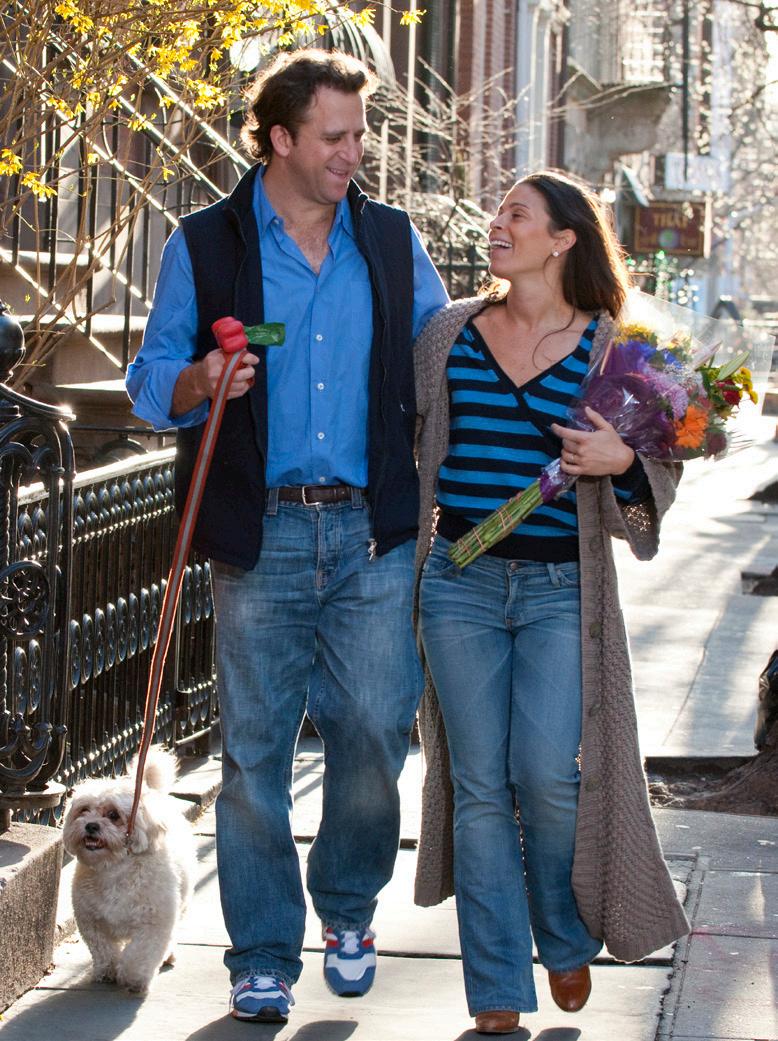
Recovery from surgery takes time. You will likely feel tired and fatigued for several weeks and this is a normal response. It is important to plan periods of rest throughout the day. You may experience skin numbness around your incision and joint stiffness. This is normal. At times, you may notice clicking. This is common and is due to the plastic and metal implant surfaces rubbing together. These symptoms will gradually improve over several weeks and months. The benefits of joint replacement usually become fully evident 6 to 8 months after surgery.
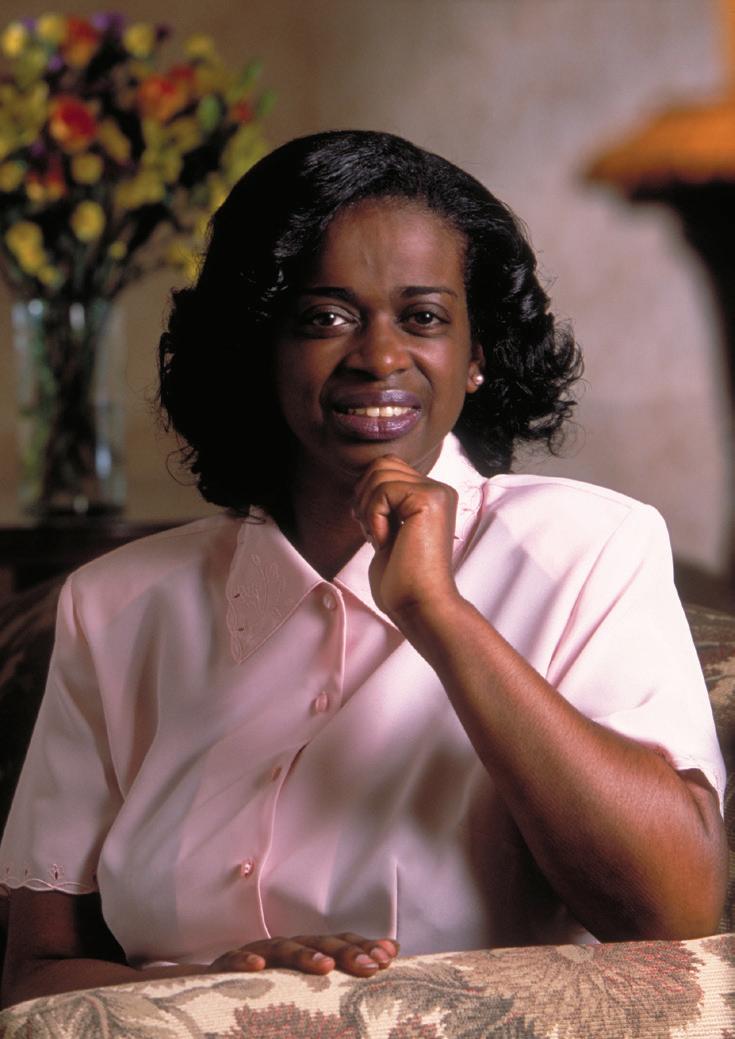

A Patient’s Guide to Total Joint Replacement Surgery (Hip and Knee) 35
Recovery at Home
During the first few weeks at home you will begin to adapt what you learned in the Hospital to your own setting. Prior to surgery, you will need to prepare your home for recovery.
■ Store items within easy reach. Take items you may need out of low cabinets or shelves prior to surgery because you will not be comfortable reaching down for them after surgery for a short period of time.
■ Prepare meals ahead of time and store in the freezer. Have your favorite home delivery numbers handy!
■ Ask a family member or support person to be available to assist with your care for the first 24 hours than as needed.
Safety Checklist
Reduce clutter
Remove loose wires and cords
Smooth rugs and anchor to the floor
Use a nightlight in the bathroom and hallway
Turn on lights when you get up at night
Secure rugs and treads on the stairs
36 A Patient’s Guide to Total Joint Replacement Surgery (Hip and Knee)
Physical Therapy Exercise Program
Postoperatively, it will be important to perform the following exercises with the appropriate number of repetitions as instructed by your physical therapist.
It is normal to experience some discomfort while doing your exercises. Take your pain medication as ordered once at home. Use ice, guided imagery, relaxation, and deep breathing.
You will find in your corresponding section a list of all the possible exercises that are prescribed after TJR surgery.
Please only follow the exercises given by your physical therapist at the Hospital after surgery.
A Patient’s Guide to Total Joint Replacement Surgery (Hip and Knee) 37
Stairs
Your physical therapist will teach you how to properly go up and down stairs prior to being discharged home. It is helpful to have a handrail to hold onto when going up and down the stairs for safety after surgery. Think about your stairs at home and make sure they are safe prior to surgery so that proper arrangements can be made.
One Total Joint Replacement
Upstairs:
1. The non-operated leg goes first.
2. Operated leg goes second.
3. The cane or crutches go last.
Bilateral Total Joint Replacements
Upstairs:
1. The stronger leg goes first.
2. The weaker leg goes second.
3. The cane or crutches go last.
Outpatient Physical Therapy
Downstairs:
1. The cane or crutches go first.
2. The operated leg goes second.
3. The non-operated leg goes last.
Downstairs:
1. The cane or crutches go first.
2. The weaker leg goes second.
3. The stronger leg goes last.
Our physical therapists at the following locations are specialists in arthritis and joint replacement. Services provided include preoperative and postoperative care, and one-time follow-up appointments.
Locations:
Orthopedic Physical Therapy Center
2nd floor of main hospital
Tel: 212.606.1213
HSS Paramus
140 East Ridgewood Avenue
Suite 175 S.
Paramus, NJ 07652
Tel: 201.599.8000
HSS Westchester
1133 Westchester Avenue
White Plains, NY 10605
Tel: 914.821.9300
HSS Rehabilitation Network
Available in various locations throughout the Tri-state area.
Tel: 212.606.1317 or 1.800.493.0039
Please contact us with any questions at these locations.
38 A Patient’s Guide to Total Joint Replacement Surgery
(Hip and Knee)
A Closer Look at Total Hip Replacement (THR)
To understand THR, you should be familiar with the structure of the hip joint, a ball-and-socket joint. The ball component is attached to the top of the femur (long bone of the thigh). The acetabulum (socket) is part of the pelvis. The ball rotating in the socket permits you to move your leg forward, backward and sideways, i.e., in all planes of motion.

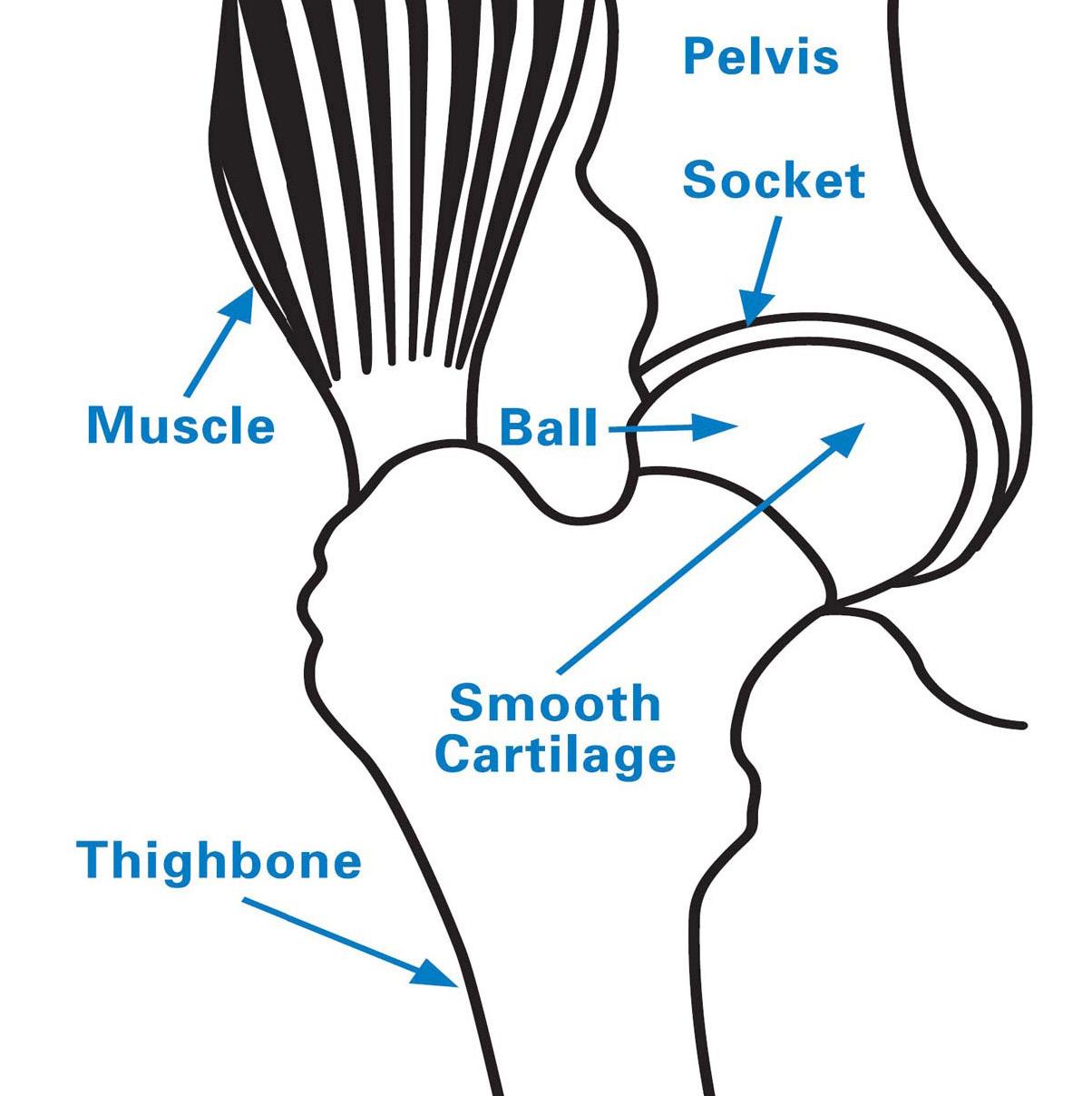
With a healthy hip, smooth cartilage covering the ends of the thigh bone and pelvis allows the ball to glide easily inside the socket.
With a problem hip, the worn cartilage no longer serves as a cushion. As the diseased or damaged bones rub together, they become rough, and the resulting pain causes difficulty in walking.
A Patient’s Guide to Total Joint Replacement Surgery (Hip and Knee) 39
or Femur
TOTAL HIP
Acetabulum or Socket
THR consists of replacing the worn out socket with a durable plastic or polyethylene cup with or without a metal titanium shell. The femoral head is replaced with a chromium-cobalt alloy metal ball that is attached to a metal stem of titanium or chromium cobalt metal alloy.

There are several ways to fasten the components (implant to the bone) during the hip replacement procedure. With a cemented THR, the prosthesis is held in place by bone cement. In a non-cemented THR, fixation occurs as the bone grows on and into the implant surface.
Bearing surfaces include metal-on-polyethylene (plastic), ceramic-on-ceramic and metal-on-metal. The most commonly used FDA approved bearing surface is metal with highly cross-linked polyethylene. The best bearing surface for you will be decided in consultation with your surgeon.
Clinical and biomechanical research has steadily improved the methods and materials available for THR. Prosthesis durability varies with the usage demands of each patient.
40 A Patient’s Guide to Total Joint Replacement Surgery (Hip and Knee)
TOTAL HIP
Leg Length After Surgery
After surgery, it is common for the operated leg to “feel longer” than the non-operated leg. This is usually due to tight muscles, especially your hip abductors, which are located on the outside of the leg. These muscles, which are usually tight before surgery, can create imbalances in your pelvis, creating an apparent discrepancy in your leg lengths. After surgery, the natural joint space of your hip is restored, and it will take time for your pelvis and muscles to adapt to this new normal position. This unevenness can resolve within a week or may take up to 6-8 weeks. Please speak with your surgeon if you have any specific questions.
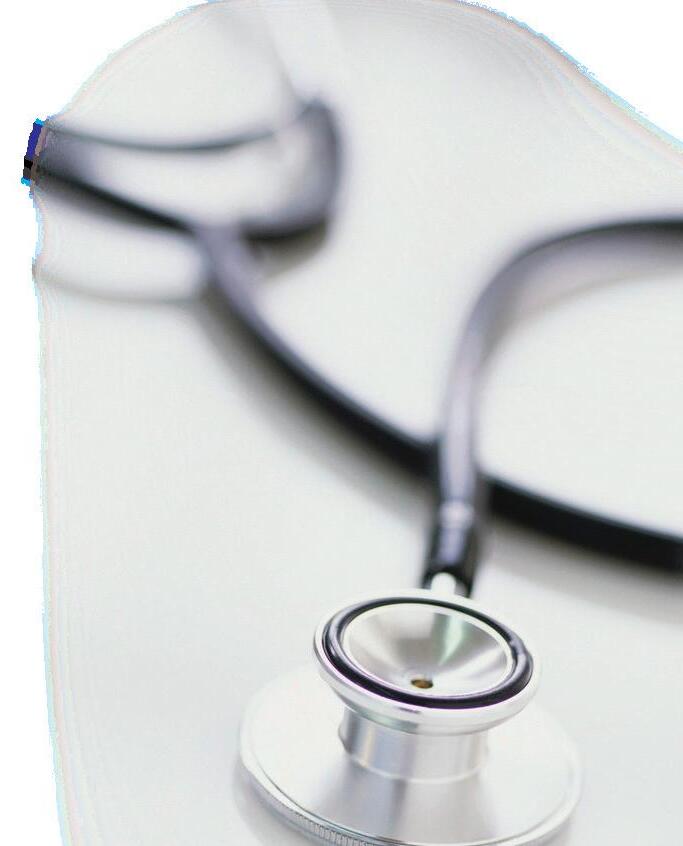
Occupational Therapy
An occupational therapist will work with you on an as needed basis in order to prepare you for home. The therapist may instruct you in functional activities, such as bathing, showering and toileting, based on your specific precautions as determined by your surgeon.
A Daily Activities video series can be found under the Rehabilitation Guide menu on the rehabilitation microsite provided to you.
A Patient’s Guide to Total Joint Replacement Surgery (Hip and Knee) 41
TOTAL HIP
Total Hip Information and Physical Therapy
The following exercises should be performed ONLY IF INSTRUCTED by your physical therapist.
1) Ankle Pumps:
Purpose: To promote blood circulation in the lower legs
■ Lie on your back with both legs straight.
■ Bring your feet upwards, “toes to your nose,” moving them from the ankle.
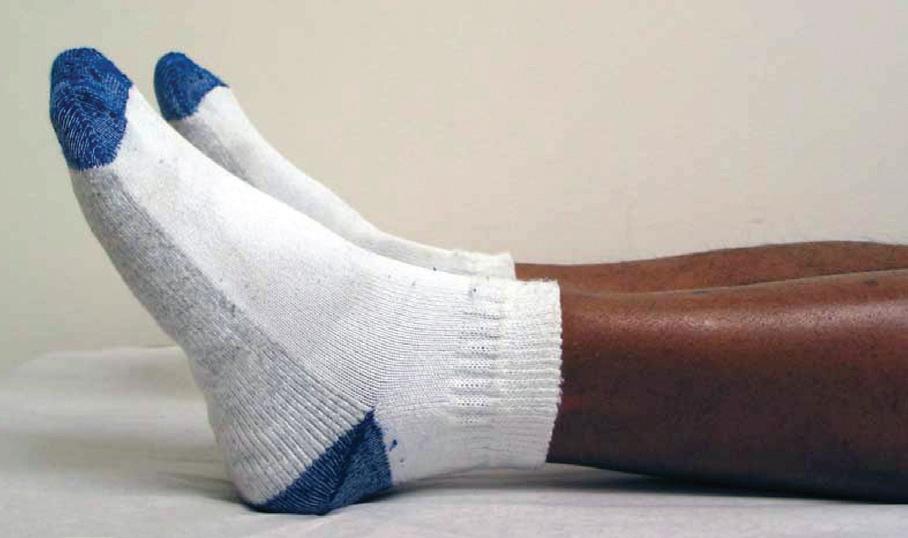
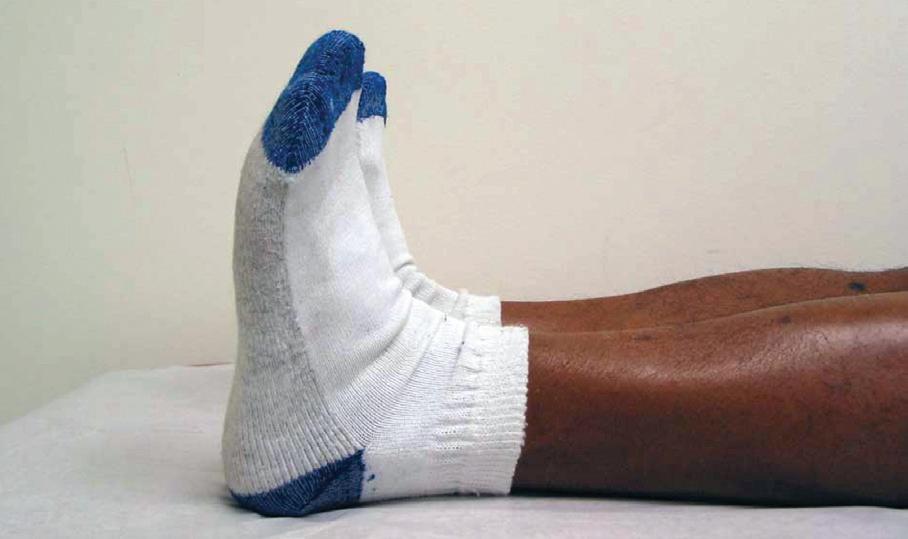
■ Now point both feet downwards, like pressing on a gas pedal.
■ Make sure to move the feet and ankles up and down through the full range of motion.
■ Perform _______ repetitions, _______ times daily.
2) Gluteal Set
Purpose: To help improve the strength of the buttock (gluteal) muscles

■ Lie on your back with both legs straight.
■ Gently squeeze your buttocks together so that your pelvis rises slightly.
■ Hold this contraction for 5 seconds then slowly release.
■ Rest between each contraction.
■ Perform _______ repetitions, _______ times daily.
NOTE: You do not need to use your hands to complete this exercise. Use only your buttocks muscles to complete the exercise.
42 A Patient’s Guide to Total Joint Replacement Surgery (Hip and Knee) TOTAL HIP
3) Quadriceps Set
Purpose: To help strengthen the front thigh muscles (quadriceps)
■ Lie on your back with a small towel under the knee on the operated side. (Towel under the knee is optional, and may improve comfort.)
■ Slowly tighten your thigh muscle (quadriceps) by pushing the back of your knee down into the bed.


■ Do not let your heel come off the bed
■ Hold this contraction for 5 seconds, and then slowly release.
■ Rest between each contraction.
■ Perform _______ repetitions, _______ times daily.
4) Heel Slides
Purpose: To help strengthen the hip/thigh muscles and encourage movement of the entire lower extremity
■ Lie on your back with both legs straight.
■ Slowly slide your heel toward your buttock.
■ Bend the hip and knee of your operated leg to a 45° angle.
■ Maintain your hip precautions by making sure the head of the bed is not elevated and that you do not bend the hip more than 45°.
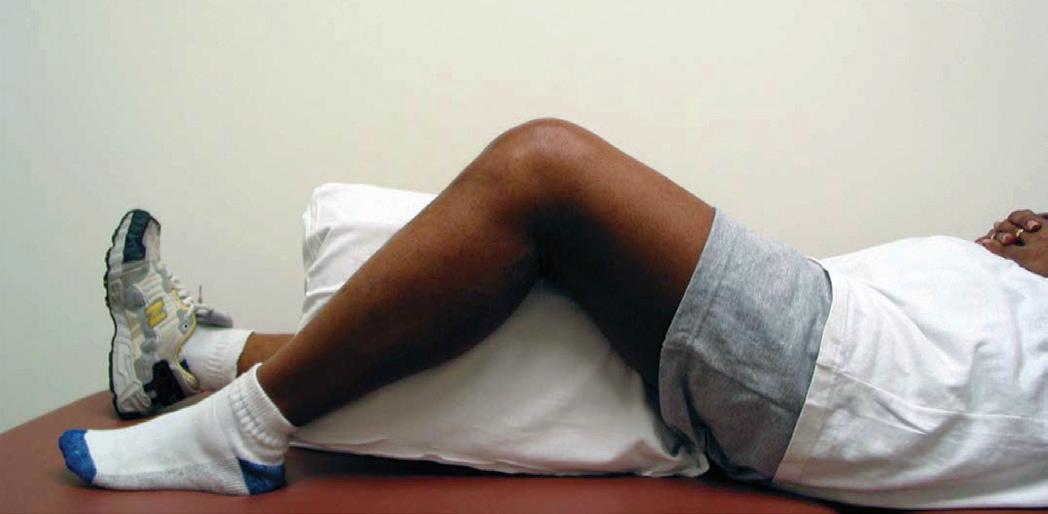
■ Perform _______ repetitions, _______ times daily.
NOTE: This is one of the harder exercises that you will perform.
Do not be discouraged if you are unable to immediately bend your hip and knee all the way to a 45° angle. This exercise will become easier as you practice.
A Patient’s Guide to Total Joint Replacement Surgery (Hip and Knee) 43 TOTAL HIP
A Closer Look at Total Knee Replacement
To understand total knee replacement, you should be familiar with the structure complex joint consisting of three bones: the femur (thigh bone), the tibia (shin patella (kneecap). When you bend or straighten your knee, the end of the femur end of the tibia, and the patella glides in front of the femur. With a healthy knee, smooth, weight-bearing surfaces allow for painless movement. ligaments provide side-to-side stability.
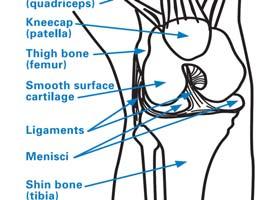

To understand TKR, you should be familiar with the structure of the knee, a complex joint consisting of three bones: the femur (thigh bone), the tibia (shin bone) and the patella (kneecap). When you bend or straighten your knee, the end of the femur rolls against the end of the tibia, and the patella glides in front of the femur.
Look at Total Knee Replacement
total knee replacement, you should be familiar with the structure of the knee, a consisting of three bones: the femur (thigh bone), the tibia (shin bone), and the When you bend or straighten your knee, the end of the femur rolls against the and the patella glides in front of the femur.
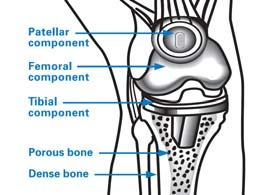
With a healthy knee, smooth, weightbearing surfaces allow for painless movement. Muscles and ligaments provide side-to-side stability.
A membrane lines the joint. Cartilage acts as a cushion between the femur and tibia and is lubricated by synovial fluid.


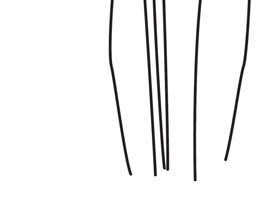
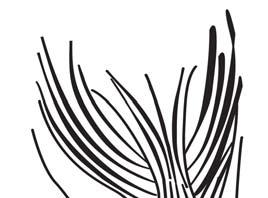

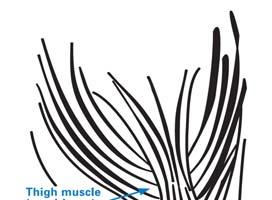




knee, smooth, weight-bearing surfaces allow for painless movement. Muscles and side-to-side stability.
With an arthritic knee, the cartilage cushion wears out. The bones rub together and become rough. The resulting inflammation and pain cause reduced motion and difficulty in walking.
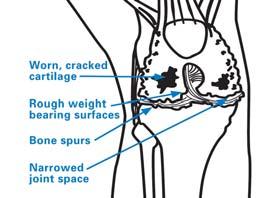

A membrane lines the joint. Cartilage acts as a cushion between the femur and lubricated by synovial fluid. With an arthritic knee, the cartilage cushion wears together and become rough. The resulting inflammation and pain cause reduced difficulty in walking.
Clinical and biomechanical research has steadily refined knee replacement methods
Prosthesis durability can vary from patient to patient because each patient’s body different stresses on the new knee. However, the average patient can expect to mobility and freedom from pain, which will, in turn, improve ability to walk.
A Patient’s Guide to Total Joint Replacement Surgery
and Knee)
(Hip
KNEE REPLACEMENT
TOTAL KNEE
The weightbearing surfaces of a TKR are smooth, as in a normal knee. A femoral component covers the end of the thigh bone, a tibial component covers the top of the shin bone and the patellar component covers the underside of the kneecap.



Most femoral components are metal alloys (cobalt chromium) or metal ceramic alloys (oxidized zirconium). The patellar component is plastic (polyethylene). The tibial insert component is also plastic (polyethylene).

The tibial tray component can be made of the following materials:
■ Cobalt chromium (metal alloy)
■ Titanium (metal alloy)
■ Polyethylene (plastic)


Clinical and biomechanical research has steadily refined knee replacement methods and materials. Prosthesis durability can vary from patient to patient because each patient’s body places slightly different stresses on the new knee. However, the average patient can expect to obtain greater mobility and freedom from pain, which will, in turn, improve ability to walk.
as a cushion between the femur and tibia and is arthritic knee, the cartilage cushion wears out. The bones rub inflammation and pain cause reduced motion and steadily refined knee replacement methods and materials. to patient because each patient’s body places slightly However, the average patient can expect to obtain greater in turn, improve ability to walk.
A Patient’s Guide to Total Joint Replacement Surgery (Hip and Knee) 45
TOTAL KNEE
Total Knee Information and Physical Therapy
The following exercises should be performed ONLY IF INSTRUCTED by your physical therapist.
1) Ankle Pumps:
Purpose: To promote blood circulation in the lower legs
■ Lie on your back with both legs straight.
■ Bring your feet upwards, “toes to your nose,” moving them from the ankle.
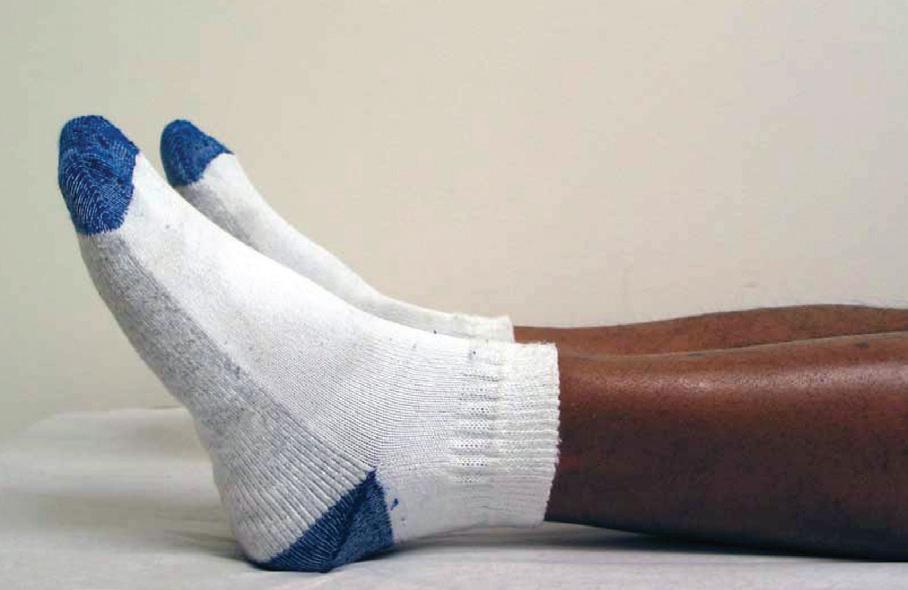

■ Now point both feet downwards, like pressing on a gas pedal.
■ Make sure to move the feet and ankles up and down through the full range of motion.
■ Perform _______ repetitions, _______ times daily.
2) Gluteal Set
Purpose: To help improve the strength of the buttock (gluteal) muscles
■ Lie on your back with both legs straight.
■ Gently squeeze your buttocks together so that your pelvis rises slightly.

■ Hold this contraction for 5 seconds then slowly release.
■ Rest between each contraction.
■ Perform _______ repetitions, _______ times daily.
NOTE: You do not need to use your hands to complete this exercise. Use only your buttocks muscles to complete the exercise.
46 A Patient’s Guide to Total Joint Replacement Surgery (Hip and Knee) TOTAL KNEE
Total Knee Information and Physical Therapy


The following exercises should be performed ONLY IF INSTRUCTED by your physical therapist.
3) Quadriceps Set
Purpose: To help strengthen the front thigh muscles (quadriceps)
■ Lie on your back with a small towel under the knee on the operated side. (Towel under the knee is optional, and may improve comfort.)
■ Slowly tighten your thigh muscle (quadriceps) by pushing the back of your knee down into the bed.
■ Do not let your heel come off the bed.
■ Hold this contraction for 5 seconds, and then slowly release.
■ Rest between each contraction.
■ Perform _______ repetitions, _______ times daily.
4) Active Range of Motion (AROM)
■ Sit in a chair, resting your foot on the floor on a paper towel or pillowcase to allow your foot to slide more easily.
■ Bend operated knee as far back as you can using your muscles.
■ Hold for seconds.
■ Perform repetitions times daily.
A Patient’s Guide to Total Joint Replacement Surgery (Hip and Knee) 47 TOTAL KNEE
5) Active Assisted Range of Motion (AAROM)
■ Sit in chair and allow operated leg to dangle, or sit with your foot on floor as described in exercise #3.
■ Bend operated knee as far back as you can using your muscles.
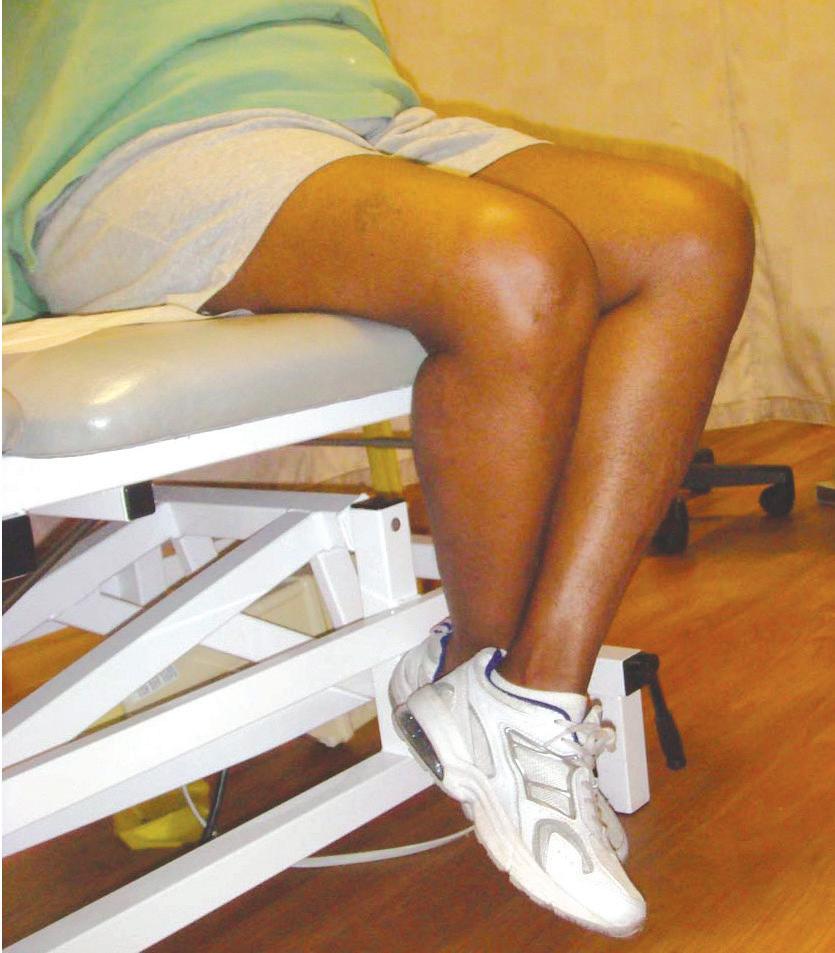
■ Then cross your non-operated leg on top and give it a gentle stretch back.

■ Keep your pelvis level and do not lift your hip off the surface you are sitting on.
■ Hold for _______seconds
■ Perform______repetitions times daily.
6) Active Knee Extension
■ Sit on chair or bed with your thighs supported on the surface.
■ Extend your operated leg up by tightening your thigh and pulling your toes up. Try to fully straighten your operated knee.
■ Your thigh should maintain contact with the surface you are sitting on.
■ Hold for _______seconds and slowly relax your leg.
■ Perform_______repetitions_______times daily.
48 A Patient’s Guide to Total Joint Replacement Surgery (Hip and Knee) TOTAL KNEE
7) Stair Stretch
■ Place your operated leg on the second step of your stairs. If you cannot reach the second step use the first.

■ Hold onto the hand rails or wall.
■ Lean forward while bending your operated knee. Do not bounce.
■ Hold for_____seconds and slowly relax your leg.
■ Perform ____ repetitions___times daily.
9) Passive Extension
■ Lie down with a towel roll under
■ your ankle. Allow your knee to stretch into full extension.

■ Place an ice pack on your knee.
■ Stay in this position for ______ minutes as tolerated.
■ Repeat times ____ per day.
A Patient’s Guide to Total Joint Replacement Surgery (Hip and Knee) 49 TOTAL KNEE
Additional Discharge Instructions
■ You may have physical therapy at home if it is prescribed by your surgeon. If so, the physical therapist will come to your home and will advance your exercises and walking program as tolerated.
■ Gradually increase your walking distance daily. A daily walking program on level surfaces is an essential component of your home exercise program. Avoid hills, steep ramps and uneven surfaces.
■ Once your mobility has improved, you may consider continuing physical therapy at an outpatient physical therapy center to continue to increase strength and endurance and optimize your function.
■ Contact your surgeon or physical therapist regarding when to stop using an assistive device.
50 A Patient’s Guide to Total Joint Replacement Surgery (Hip and Knee)
Conclusion
The Patient Education staff and members of the ARJR Service at HSS hope that you find this booklet helpful on your journey to recovery. The process of a total joint replacement is indeed a journey. Its endpoint—improved health and mobility—is well worth the effort. We stand ready to assist you every step of the way. If you have any questions, please feel free to ask any member of our staff. Your well-being is our first concern. We encourage you to seek out additional information that is located on the HSS website at hss.edu. There will be many opportunities to review the material provided in this booklet. During each visit, the staff will reinforce the information and will likely provide additional and more specific instructions. In addition, our Patient Education staff will review the information during the preoperative education class and will respond to any questions that you may have.
Can We Help Someone Else?
Now or later, you may have family members or friends who may need the services of an orthopedist (in any specialty area) or a rheumatologist. An easy way for them to get in touch with Hospital for Special Surgery is to call the HSS Physician Referral Service at 1.800.854.0071.

A Patient’s Guide to Total Joint Replacement Surgery (Hip and Knee) 51
Providing Feedback to HSS
You may be able to help us!
Hospital for Special Surgery has achieved a national reputation for excellence in orthopedics, rheumatology and patient-centered care. All of us on the HSS team strive to provide you with the care you need to achieve the best health outcomes.
Feedback from our patients has been a critical component in achieving this excellence. We listen. And we respond…especially when we learn of new opportunities for further improvement.
Another important part of achieving excellence is to know when things go right! We also want to know when our staff members provide outstanding care.
When you have a moment to reflect, we would appreciate your feedback. You can, of course, send a letter or note to any HSS staff person, or to your doctor. You already know your doctor’s address. He or she appreciates hearing from you.
To address a Hospital staff person whom you know, you can write to that person at the Hospital’s address below. Or, you can contact us through the Hospital’s website. Otherwise, please feel free to address your feedback to:
Louis A. Shapiro, FACHE President & Chief Executive Officer Hospital for Special Surgery
535 East 70th Street
New York, NY 10021
Thank you for choosing Hospital for Special Surgery for your surgery.
52 A Patient’s Guide to Total Joint Replacement Surgery (Hip and Knee)
A Patient’s Guide to Total Joint Replacement Surgery (Hip and Knee) 53 NOTES
54 A Patient’s Guide to Total Joint Replacement Surgery (Hip and Knee) NOTES
A Patient’s Guide to Total Joint Replacement Surgery (Hip and Knee) 55 NOTES
56 A Patient’s Guide to Total Joint Replacement Surgery (Hip and Knee) NOTES
Hospital for Special Surgery is an affiliate of Weill Cornell Medical College.

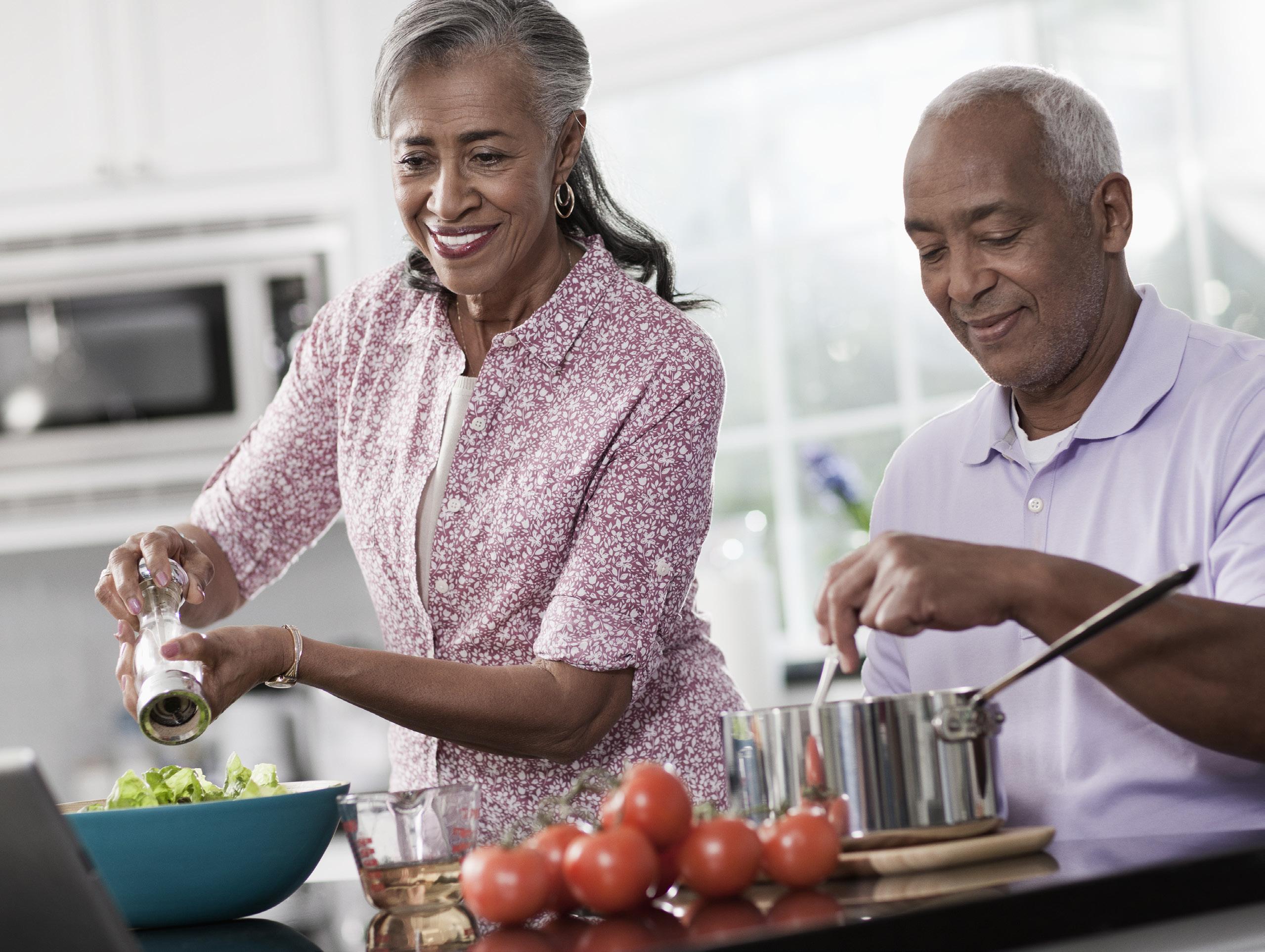
New
tel
hss.edu
535 East 70th Street
York, NY 10021
212.606.1000



















































